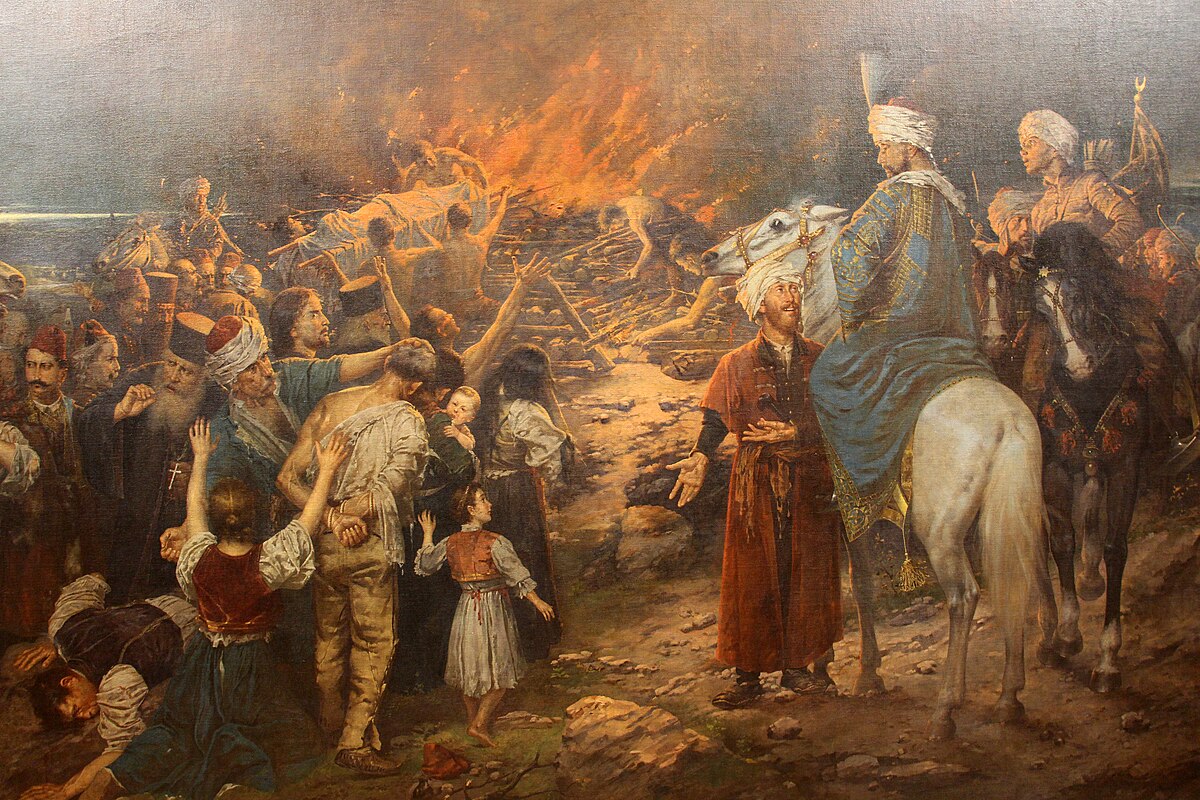
Serb uprising of 1596–1597
Bosnia-HerzegovinaThe Serb uprising of 1596–1597, also known as the Herzegovina uprising of 1596–1597, was a rebellion organized by Serbian Patriarch Jovan Kantul (s. 1592–1614) and led by Grdan, the vojvoda ("duke") of Nikšić against the Ottomans in the Sanjak of Herzegovina and Montenegro Vilayet, during the Long Turkish War (1593–1606). The uprising broke out in the aftermath of the failed Banat Uprising in 1594 and the burning of Saint Sava's relics on 27 April 1595; it included the tribes of Bjelopavlići, Drobnjaci, Nikšić, and Piva. The rebels, defeated at the field of Gacko (Gatačko Polje) in 1597, were forced to capitulate due to a lack of foreign support.
After the failure of the uprising, many Herzegovinians moved to the Bay of Kotor and Dalmatia. The earliest more significant Serb migrations took place between 1597 and 1600. Grdan and Patriarch Jovan would continue to plan revolts against the Ottomans in the coming years. Jovan contacted the pope again in 1599, without success. Serbian, Greek, Bulgarian, and Albanian monks visited European courts to solicit help. The first decade of the 17th century saw some successful Montenegrin battles against the Ottomans under Metropolitan Rufim. The tribe of Drobnjaci defeated the Ottomans in Gornja Bukovica on 6 May 1605. However, Ottomans retaliated the same summer and captured the duke Ivan Kaluđerović, who was eventually taken to Pljevlja and executed. From the assembly in Kosijerevo monastery, on 18 February 1608, Serb leaders urged the Spanish and Neapolitan court for final energetic action. Preoccupied, Spain could not do much in Eastern Europe. However, the Spanish fleet did attack Durrës in 1606. Finally, on 13 December 1608, Patriarch Jovan Kantul organized an assembly in Morača Monastery, gathering all the rebel leaders of Montenegro and Herzegovina. The 1596–97 uprising would stand as a model for multiple anti-Ottoman uprisings in Bosnia and Herzegovina in the coming centuries.
